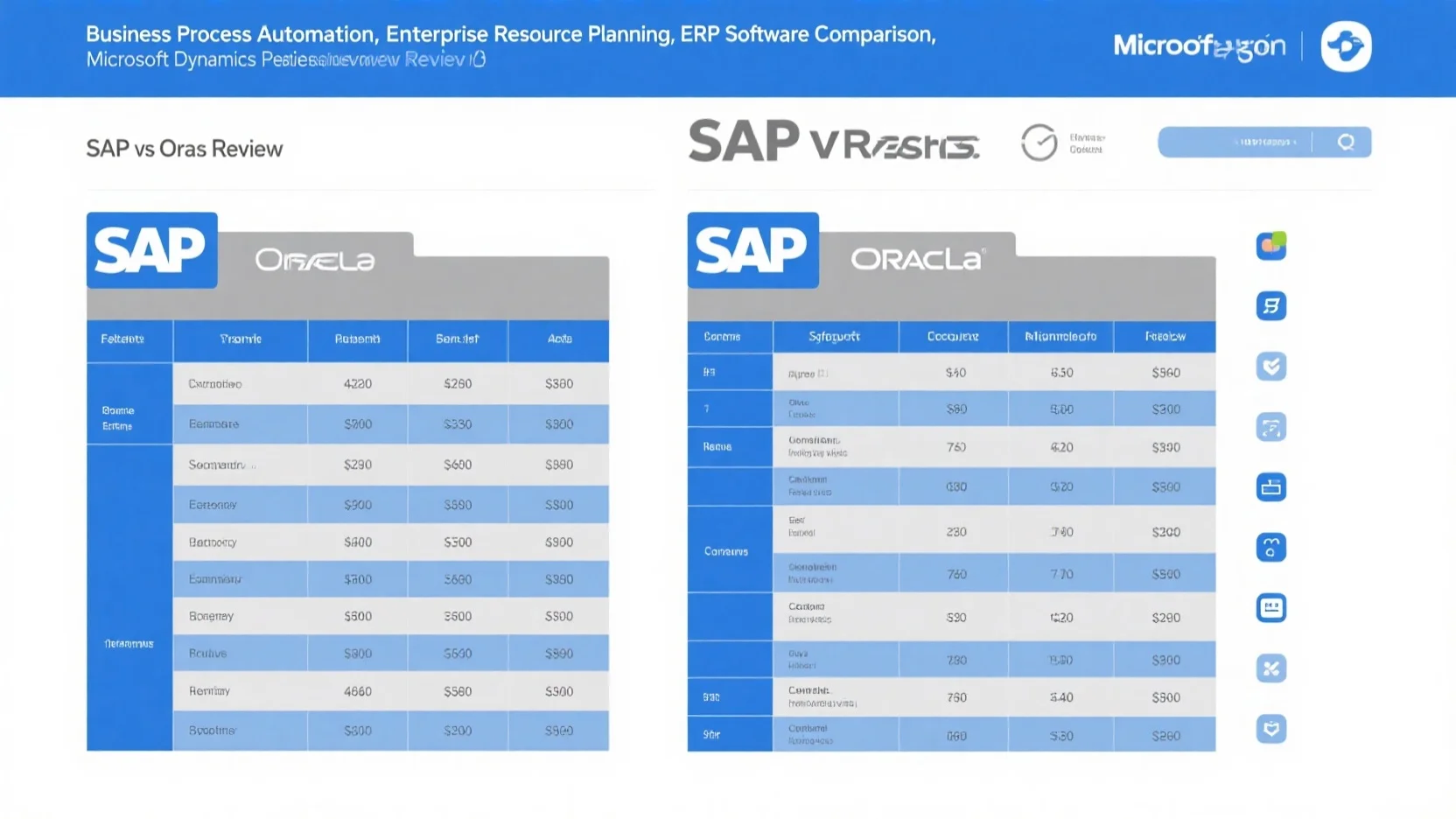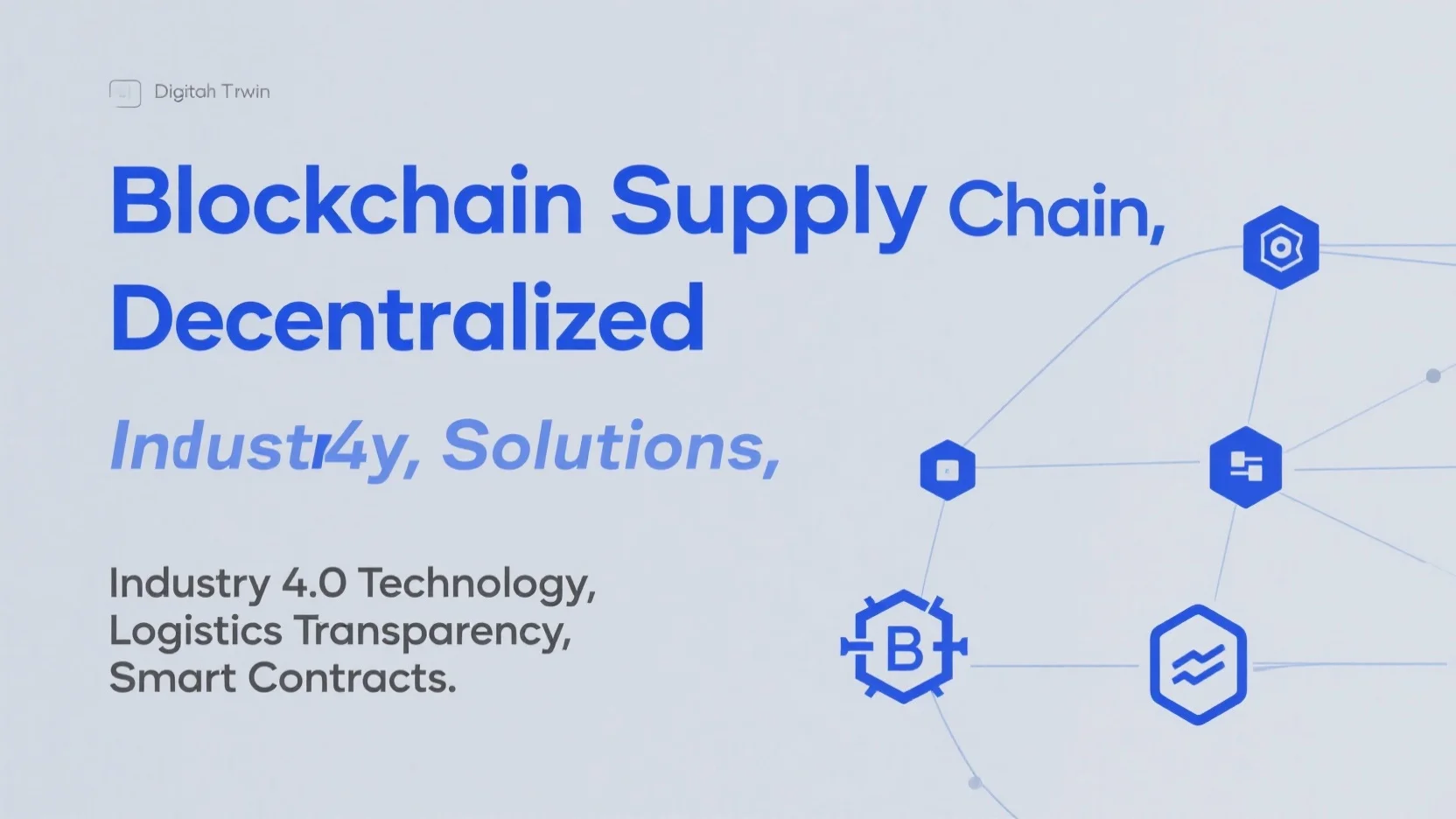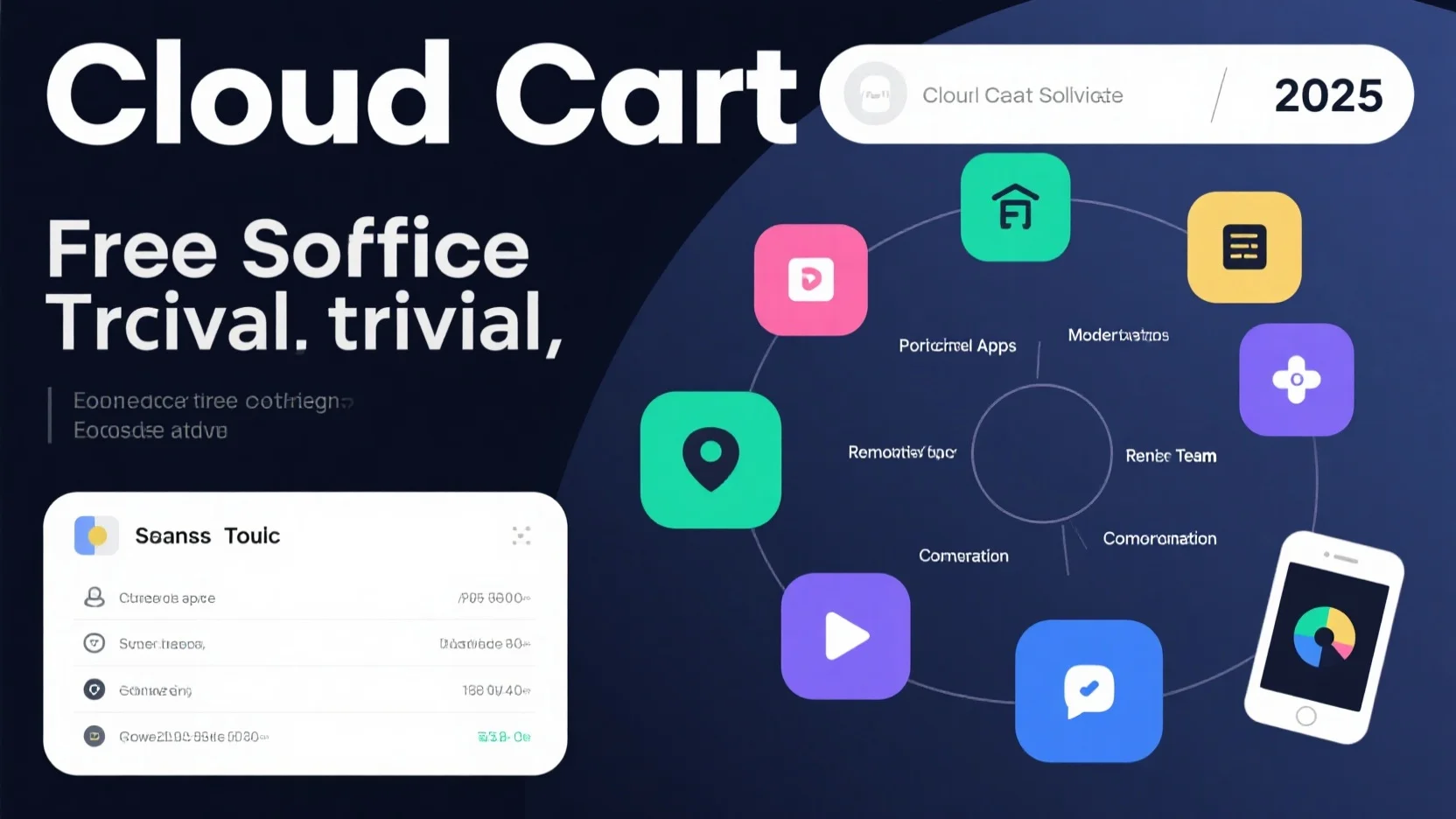Image Source: pexels
Enterprise Resource Planning (ERP) systems streamline business processes by integrating core functions like finance, supply chain, and human resources into a unified platform. In 2025, businesses face a critical decision when considering the ERP Systems Comparison: SAP vs 2025 Oracle vs 2025 Microsoft Dynamics. Each system offers unique strengths, such as SAP’s real-time analytics, Oracle’s AI-driven capabilities, and Microsoft Dynamics’ seamless integration with its ecosystem. Comparing these solutions helps organizations align their ERP choice with operational needs and long-term goals.
Key Takeaways
- ERP systems help businesses work better by combining key tasks like money management and supply chain, making things faster and clearer.
- Picking the best ERP system means checking if it can grow, connect with other tools, and has features for your industry.
- Think about all costs, like setup and upkeep, to make sure the ERP system is affordable and useful for a long time.
Understanding ERP Systems in 2025
Definition and core functions
ERP systems in 2025 serve as comprehensive platforms that unify various business processes. They enable organizations to manage operations efficiently by integrating core functions such as finance, human resources, supply chain management, and customer relationship management. These systems have evolved significantly, incorporating advanced technologies like artificial intelligence and cloud computing to enhance functionality and scalability.
| Core Function | Description |
|---|---|
| Finance | Manages accounting, financial reporting, budgeting, and asset management for transparency. |
| Human Resources (HR) | Handles employee records, payroll, recruitment, and compliance efficiently. |
| Supply Chain Management (SCM) | Optimizes product flow from procurement to delivery, including inventory and logistics. |
| Manufacturing | Assists in production planning and control to ensure quality standards are met. |
| Customer Relationship Management (CRM) | Manages customer interactions and enhances satisfaction and retention. |
Benefits for businesses
ERP systems offer transformative benefits for businesses in 2025.
- Increased Efficiency: Automation allows employees to complete tasks faster and with greater accuracy, reducing resource consumption.
- Improved Data Visibility: Real-time data access helps organizations identify trends and optimize operations, leading to higher profitability.
- Enhanced Customer Experiences: Streamlined processes improve order tracking and personalization, boosting customer satisfaction.
For example, the fashion retailer Aubainerie achieved a 25% increase in customer conversions after implementing an ERP system. This demonstrates how real-time data can directly impact customer engagement and business outcomes.

Key trends shaping ERP systems
Several trends are shaping the ERP landscape in 2025:
- Multi-tenant SaaS and AI are driving modernization and efficiency.
- AI features are increasingly embedded in ERP solutions, enhancing their capabilities.
- Automation and analytics have become essential in ERP requests for proposals (RFPs).
- Industry-specific cloud ERP solutions are in high demand, despite potential trade-offs.
- Regulatory changes, particularly in the EU, are influencing data storage and access practices.
These trends highlight the dynamic nature of ERP systems and their ability to adapt to evolving business needs. Businesses conducting an ERP Systems Comparison: SAP vs 2025 Oracle vs 2025 Microsoft Dynamics must consider these advancements to make informed decisions.
Key Considerations for Choosing an ERP System
Scalability and flexibility
Scalability and flexibility are critical factors when selecting an ERP system. Businesses require solutions that can grow alongside their operations and adapt to industry changes. A scalable ERP system accommodates increased workloads and additional users without significant investments. Conversely, systems lacking flexibility may hinder growth, inflate costs, and reduce operational efficiency.
Tip: Companies planning for long-term growth should prioritize ERP systems with modular architectures, allowing them to add functionalities as needed.
Integration with existing systems
Integrating an ERP system with existing infrastructure presents unique challenges. Organizations must ensure interoperability and future-proof their systems to work seamlessly with emerging technologies. Assigning the wrong personnel to the project or neglecting adequate testing can lead to failures, as seen in Hershey’s infamous ERP implementation issues.
Common integration challenges include:
- Anticipating the ERP system’s return on investment and lifespan.
- Addressing compatibility issues with legacy systems.
- Allocating sufficient time and resources for testing and deployment.
Customization and industry-specific features
ERP systems in 2025 offer a range of industry-specific features to meet diverse business needs. For example, predictive analytics helps anticipate supply chain fluctuations, while modular architectures allow businesses to expand their systems incrementally.
| Feature | Description |
|---|---|
| Inventory Management | Tracks inventory levels, raw materials, and finished goods in real time. |
| Predictive Analytics | Anticipates demand and supply changes using historical data. |
| Supply Chain Management | Optimizes procurement, warehousing, and logistics processes. |
| AI & Machine Learning | Enhances efficiency through predictive maintenance and process optimization. |
Cost and total cost of ownership
The total cost of ownership (TCO) for ERP systems varies significantly based on business size and requirements. Small to mid-sized businesses typically spend between $10,000 and $150,000 annually for cloud-based ERP solutions. Larger enterprises may invest over $1,000,000, depending on the scope and level of customization.
Note: While upfront costs may seem high, businesses should consider long-term savings from improved efficiency and reduced manual labor.
Implementation time and support
ERP implementation timelines depend on the size and complexity of the organization. Small and medium-sized businesses usually complete the process within 3-9 months, while large enterprises may take 6-18 months. Multinational corporations often face multi-year implementation timelines.
| Business Size | Implementation Time |
|---|---|
| Small and Medium Businesses | 3-9 months |
| Large Businesses | 6-18 months |
| Multinational Businesses | Several years |
Adequate support during implementation is essential to ensure success. Vendors often provide training, troubleshooting, and ongoing maintenance to help businesses transition smoothly.
SAP ERP in 2025: Features, Pros, and Cons
Image Source: pexels
Key features and capabilities
SAP ERP in 2025 offers a robust suite of features tailored for large enterprises. Its comprehensive functionality spans industries, providing tools for finance, supply chain, and human resources. Real-time analytics enables businesses to monitor operations across regions, ensuring data-driven decision-making. The platform also boasts a strong ecosystem, supported by numerous partners for customization and integration. However, its complexity and high implementation risk may pose challenges for organizations transitioning from older systems.
| Feature | Description |
|---|---|
| Comprehensive Functionality | Offers a broad range of functionality across industries, particularly beneficial for large enterprises. |
| Real-Time Analytics | Provides crucial real-time analytics and data processing for monitoring operations across regions. |
| Strong Ecosystem | Features a robust ecosystem with numerous partners for support and customization. |
| High Complexity and Risk | Implementation is complex, time-consuming, and costly, especially for migrations from older systems. |
| User Interface Needs Improvement | The user interface is not as intuitive as competitors, leading to longer training times. |
Strengths and weaknesses
SAP ERP excels in delivering comprehensive industry solutions and robust data security. Its real-time analytics and strong resource ecosystem further enhance its appeal. However, the platform’s complexity and costly implementations remain significant drawbacks. Additionally, its user interface requires improvement to match the intuitiveness of competitors.
| Strengths | Weaknesses |
|---|---|
| Comprehensive Functionality | High Complexity and Risk |
| Real-Time Analytics | User Interface Needs Improvement |
| Strong Ecosystem | Complex and Costly Implementations |
| Robust Data Security |
Pricing and cost considerations
SAP ERP pricing in 2025 varies based on deployment models, user access levels, and customization needs. Subscription-based models, such as SAP Cloud Single-Tenant Professional, start at $219 per user per month. Advanced distribution packages can cost up to $1,300 in base fees, with additional charges for professional and limited users. Businesses must also account for implementation, training, and maintenance costs.
-
Pricing Models:
- SAP Cloud Single-Tenant Professional: $219/user/month
- SAP Business One Cloud Express Edition: $645 base fee + $185 Pro/user/month
- Advanced Distribution: $1,300 base fee + $305 Pro/user/month
Industries best suited for SAP
SAP ERP is ideal for industries requiring extensive functionality and scalability. Manufacturing, retail, and logistics sectors benefit from its real-time analytics and supply chain optimization tools. Large enterprises with complex operations also find SAP ERP advantageous due to its robust ecosystem and industry-specific solutions.
Tip: Businesses in highly regulated industries, such as pharmaceuticals or finance, can leverage SAP ERP’s strong data security features to ensure compliance.
2025 Oracle ERP: Features, Pros, and Cons
Key features and capabilities
Oracle Fusion Cloud ERP in 2025 offers a robust, cloud-based solution designed to streamline operations across industries. Its integrated applications cover financial management, supply chain management, and human capital management, making it a versatile choice for businesses prioritizing efficiency and growth. Automatic updates ensure the system remains current, while advanced AI capabilities enhance decision-making processes. Real-time analytics provide actionable insights, and its adaptable framework supports diverse business models.
Key features include:
- Financial management for comprehensive fiscal oversight.
- Supply chain management to improve operational efficiency.
- Human capital management to optimize workforce resources.
- Project portfolio management for better project execution.
- Risk management and compliance to strengthen enterprise security.
Strengths and weaknesses
Oracle ERP excels in delivering a comprehensive feature set and strong cloud capabilities. Its open architecture facilitates seamless integration with other systems, enhancing flexibility. However, the platform’s complexity and high implementation costs may deter smaller organizations. Managing multiple Oracle modules also requires significant technical expertise.
| Strengths | Weaknesses |
|---|---|
| Comprehensive Feature Set | Complex and Costly Implementations |
| Open Architecture and Integration | Integration Challenges |
| Strong Cloud and AI Capabilities | N/A |
Pricing and cost considerations
Oracle ERP pricing in 2025 depends on factors such as user count, modules, and deployment type. Businesses can use Oracle’s Pricing Calculator to estimate costs based on their specific needs. The total cost of ownership includes software, implementation, training, and maintenance expenses.
- Perpetual licensing involves a one-time fee, offering better customization but higher upfront costs.
- Subscription models provide flexibility but can accumulate significant costs over time.
- Add-ons and contract length influence pricing, with longer contracts often yielding discounts.
Understanding these variables is essential for businesses to budget effectively and avoid hidden costs.
Industries best suited for Oracle
Oracle Fusion Cloud ERP caters to mid to large-sized enterprises across industries such as manufacturing, healthcare, and retail. Its adaptable nature ensures it meets the unique needs of each sector. Businesses aiming to enhance operational efficiency and scalability find Oracle ERP particularly valuable.
Tip: Organizations in dynamic industries benefit from Oracle’s real-time analytics and AI-driven insights, which support data-driven decision-making.
2025 Microsoft Dynamics ERP: Features, Pros, and Cons
Key features and capabilities
Microsoft Dynamics ERP in 2025 offers a versatile suite of tools designed to enhance business operations. Its modular design allows organizations to tailor the system to their specific needs, ensuring scalability and adaptability. Advanced analytics and AI integration provide actionable insights, enabling data-driven decision-making. The platform also introduces Copilot features, which streamline workflows through AI-driven assistance. Enhanced customer service capabilities, such as AI-powered routing, improve client satisfaction.
| Feature/Capability | Description |
|---|---|
| AI Integration | Enhances productivity and decision-making through AI-driven insights and automation. |
| User-Friendly Interface | A reimagined user experience that simplifies navigation and task management for users. |
| Modular Design | Allows businesses to customize their ERP solutions based on specific needs and scalability. |
| Advanced Analytics | Provides deep insights into business performance and operational efficiency through data analysis. |
| Copilot Features | Introduces AI assistants to streamline tasks and improve user productivity across various applications. |
| Automation in Finance and Supply Chain | Automates complex processes like tax management and account reconciliations to enhance efficiency. |
| Enhanced Customer Service Capabilities | AI-driven routing and knowledge management improve service delivery and customer satisfaction. |
| Project Operations Enhancements | Focuses on usability and scalability for project management, including mobile applications for time management. |
Strengths and weaknesses
Microsoft Dynamics ERP demonstrates several strengths, particularly its seamless integration with Microsoft tools like Office 365 and Teams. This tight integration enhances user experience and productivity. The platform’s scalability makes it suitable for businesses of all sizes, while its AI and machine learning capabilities support advanced analytics and automation. However, implementation complexity can pose challenges for organizations with limited technical expertise. Additionally, variability in partner quality may lead to inconsistent outcomes during deployment.
-
Strengths:
- Tight integration with Microsoft tools enhances user experience.
- Scalability and flexibility cater to various business sizes.
- AI and machine learning capabilities support data-driven decisions.
-
Weaknesses:
- Implementation complexity can challenge inexperienced organizations.
- Variability in partner quality may lead to inconsistent outcomes.
Pricing and cost considerations
Microsoft Dynamics ERP offers flexible pricing options to accommodate businesses of different sizes and needs. The Essentials plan for Dynamics 365 Business Central costs $70 per user per month, while the Premium plan is priced at $100 per user per month. Enterprise-level solutions, such as Finance and Supply Chain Management, cost $120 and $180 per user per month, respectively. Implementation costs range from $20,000 to over $1 million, depending on factors like data quality, team expertise, and required customizations. Businesses should also budget for long-term support and maintenance to ensure optimal system performance.
-
Pricing Overview:
- Essentials Plan: $70/user/month
- Premium Plan: $100/user/month
- Finance Module: $120/user/month
- Supply Chain Management Module: $180/user/month
-
Implementation Costs:
- Minimum cost: $35,000
- Maximum cost: Over $1 million
Industries best suited for Microsoft Dynamics
Microsoft Dynamics ERP is well-suited for industries that prioritize integration and scalability. Retailers benefit from its enhanced customer service capabilities, while manufacturers leverage its automation features to optimize supply chain operations. Professional services firms find value in its project management tools, particularly the mobile applications for time tracking. Small to medium-sized businesses appreciate its modular design, which allows them to scale their ERP systems as they grow.
Tip: Organizations already using Microsoft tools can maximize efficiency by adopting Microsoft Dynamics ERP, as it seamlessly integrates with existing software.
ERP Systems Comparison: SAP vs 2025 Oracle vs 2025 Microsoft Dynamics
Image Source: pexels
Integration and compatibility
Integration capabilities play a pivotal role in determining the success of an ERP system. SAP, Oracle, and Microsoft Dynamics each offer unique strengths in this area.
- SAP ERP: Known for its robust third-party integration, SAP excels in connecting with external systems. However, its configuration process can be complex, requiring significant technical expertise.
- Oracle ERP: Oracle provides seamless integration for large datasets and diverse business units, making it ideal for enterprises with complex operations.
- Microsoft Dynamics: Dynamics stands out for its effortless integration with Microsoft tools like Office 365, Teams, and Power BI, offering a familiar ecosystem for users.
| ERP System | Integration Capabilities |
|---|---|
| SAP ERP | Strong third-party integration, but configuration can be complex. |
| Oracle ERP | Robust integration, especially for large datasets and diverse business units. |
| Microsoft Dynamics | Seamless integration with Microsoft tools (Office 365, Teams, Power BI). |
Customization and flexibility
Customization and flexibility are critical for businesses with unique operational needs. Microsoft Dynamics and Oracle offer modular designs, while SAP provides extensive customization options.
- SAP ERP: Offers deep customization but requires significant time and resources.
- Oracle ERP: Features a flexible architecture, allowing businesses to adapt the system to their needs.
- Microsoft Dynamics: Its modular design enables businesses to scale and customize as they grow, making it particularly appealing to small and medium-sized enterprises.
Tip: Companies with limited budgets should consider modular ERP systems like Microsoft Dynamics for cost-effective scalability.
AI and automation capabilities
AI and automation have transformed ERP systems in 2025, enhancing efficiency and decision-making.
- SAP S/4HANA: Delivers real-time analytics and advanced AI for automating tasks and predicting trends.
- Oracle ERP Cloud: Excels in financial management and integrates seamlessly with other Oracle products.
- Microsoft Dynamics 365: Features AI-driven tools like Copilot, which streamline workflows and improve productivity.
AI-powered ERPs now enable real-time supply chain optimization, automated finance, and intelligent HR workflows, reducing manual intervention.
Pricing and total cost of ownership
Pricing varies significantly among the three ERP systems, influenced by licensing models and customization needs.
| ERP Solution | Pricing Model | Estimated Cost (Per User/Month) |
|---|---|---|
| SAP S/4HANA | License-based, highly customizable | $150 – $400+ |
| Oracle Cloud ERP | Subscription-based, scalable with modules | $175 – $400+ |
| Microsoft Dynamics 365 | Subscription-based, modular | $65 – $210+ |
Microsoft Dynamics offers the most affordable entry point, while SAP remains the most expensive due to its complex licensing structure.
Industry-specific applications
Each ERP system caters to specific industries based on its strengths.
| ERP System | Best For | Strengths | Weaknesses |
|---|---|---|---|
| Microsoft Dynamics 365 | Mid-sized to large businesses | Flexibility, scalability, comprehensive integration, cost-effective | Complex implementations |
| Oracle Fusion Cloud ERP | Large organizations | Open architecture, advanced AI capabilities, comprehensive ecosystem | High implementation complexity |
| SAP S/4HANA | Large enterprises | Comprehensive industry solutions, strong resource ecosystem, robust security | Complex and costly implementations |
User experience and ease of use
User experience is a key differentiator among ERP systems.
| ERP Solution | User Interface (UI) | Ease of Use | Learning Curve |
|---|---|---|---|
| SAP S/4HANA | Functionally rich, but complex | High effort needed for customization | Steep learning curve. Needs extensive training |
| Oracle Cloud ERP | Intuitive and cloud-based UI | Requires technical expertise | Moderate to steep learning curve |
| Microsoft Dynamics 365 | User-friendly, Microsoft ecosystem | Easy for existing Microsoft users | Moderate, relatively faster onboarding process |
Microsoft Dynamics offers the most intuitive interface, particularly for businesses already using Microsoft tools.
Choosing the Right ERP System for Your Business
Small to medium-sized businesses
Small to medium-sized businesses (SMBs) must carefully evaluate their unique needs when selecting an ERP system. Scalability and flexibility are critical to ensure the system can grow alongside the business. Cost considerations also play a significant role, as SMBs often operate with limited budgets. Ease of use is another key factor, as a user-friendly interface reduces training time and enhances productivity.
To make an informed decision, SMBs should ask the following questions:
- What are the specific needs of the business?
- How do the ERP system’s capabilities align with company goals?
- Does the solution fit within the budget?
Modern ERP systems for SMBs often include features like role-based dashboards, custom reporting, and integration with third-party applications. These tools provide actionable insights and streamline operations. Additionally, quality vendor support and training ensure a smooth implementation process. Businesses should prioritize solutions that offer easy configuration and adaptability to future needs.
Tip: SMBs should consider modular ERP systems like Microsoft Dynamics, which allow for incremental upgrades as the business grows.
Large enterprises
Large enterprises require ERP systems that can handle complex operations and large-scale data. Scalability is essential to accommodate future growth, while flexibility ensures the system can adapt to evolving business processes. Integration capabilities are equally important, as enterprises often rely on multiple systems across departments.
Key considerations for large enterprises include:
- Robust data migration capabilities for mergers and acquisitions.
- Compliance with regulatory requirements during organizational changes.
- Advanced analytics and automation to optimize decision-making.
ERP systems like SAP and Oracle excel in meeting these demands. Their comprehensive feature sets and strong cloud capabilities make them ideal for large organizations. However, enterprises must allocate sufficient resources for implementation and ongoing maintenance to maximize the system’s potential.
Note: Enterprises should evaluate the vendor’s ability to provide long-term support and updates to ensure the ERP system remains relevant.
Industry-specific recommendations
Different industries have unique requirements that influence ERP selection. For example, manufacturers benefit from ERP systems with advanced supply chain management and automation features. Retailers prioritize customer relationship management (CRM) tools and real-time inventory tracking. Professional services firms often seek project management capabilities and mobile-friendly solutions.
| Industry | Recommended ERP Features |
|---|---|
| Manufacturing | Supply chain optimization, predictive maintenance, automation |
| Retail | CRM tools, real-time inventory tracking, personalized analytics |
| Professional Services | Project management, mobile applications, time tracking |
Businesses in highly regulated industries, such as healthcare or finance, should prioritize ERP systems with robust compliance and data security features. SAP and Oracle are well-suited for these sectors due to their strong regulatory support. Meanwhile, Microsoft Dynamics offers flexibility and affordability, making it a popular choice for SMBs across various industries.
Tip: Organizations should align ERP features with their industry-specific challenges to maximize ROI and operational efficiency.
SAP, Oracle, and Microsoft Dynamics ERP systems in 2025 cater to distinct business needs. SAP excels in scalability for large enterprises, Oracle offers advanced AI-driven insights, and Microsoft Dynamics provides affordability and seamless integration.
Recommendation: Businesses should assess operational goals, budget constraints, and industry-specific requirements to select the most suitable ERP system.
FAQ
What is the primary difference between SAP, Oracle, and Microsoft Dynamics ERP systems?
SAP focuses on scalability for large enterprises. Oracle excels in AI-driven insights. Microsoft Dynamics offers affordability and seamless integration with Microsoft tools.
How long does ERP implementation typically take?
Implementation time varies by business size. Small businesses may take 3-9 months, while large enterprises often require 6-18 months or more.
Which ERP system is best for small businesses?
Microsoft Dynamics is ideal for small businesses. Its modular design, affordability, and integration with Microsoft tools make it a practical choice for growing organizations.





